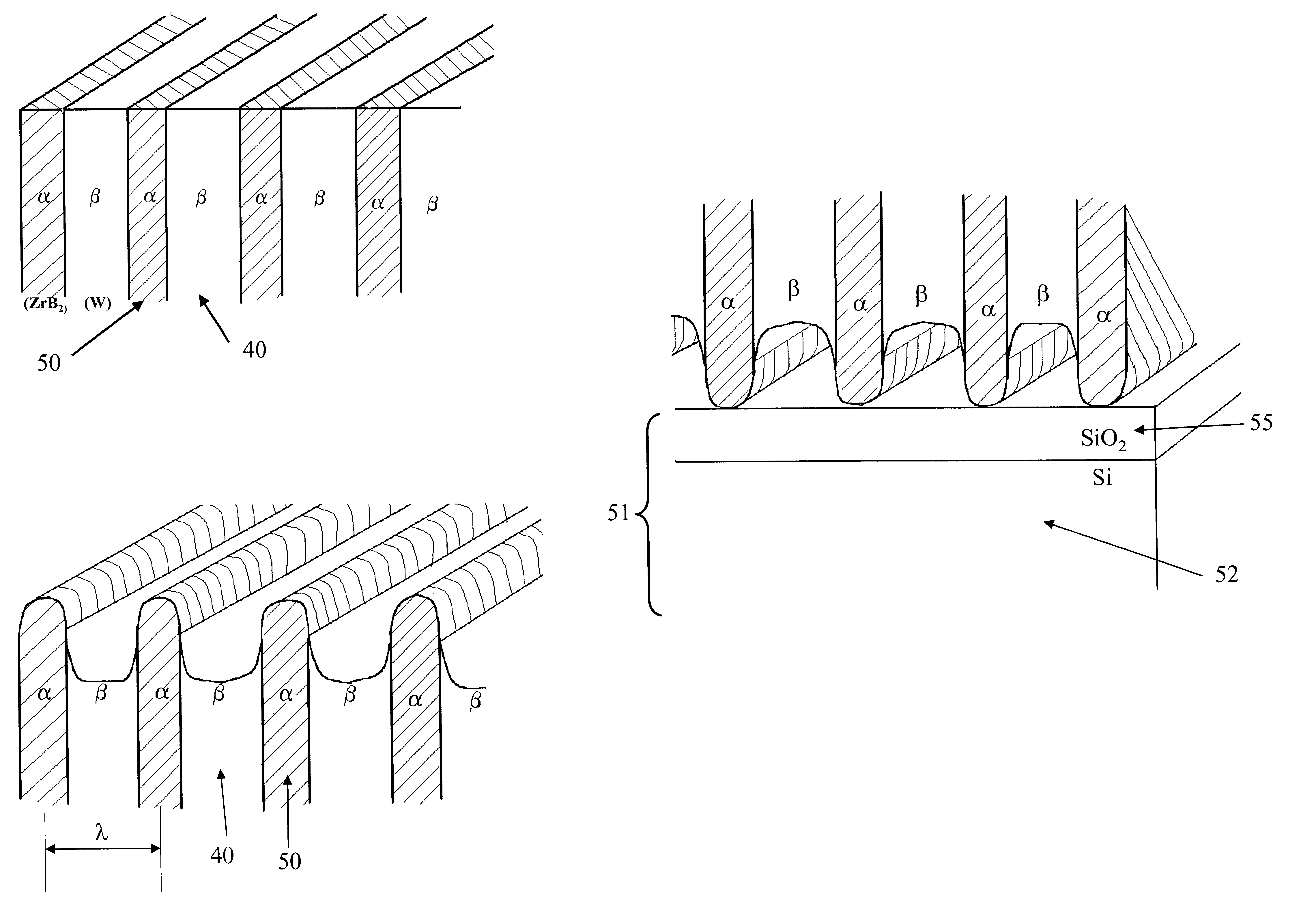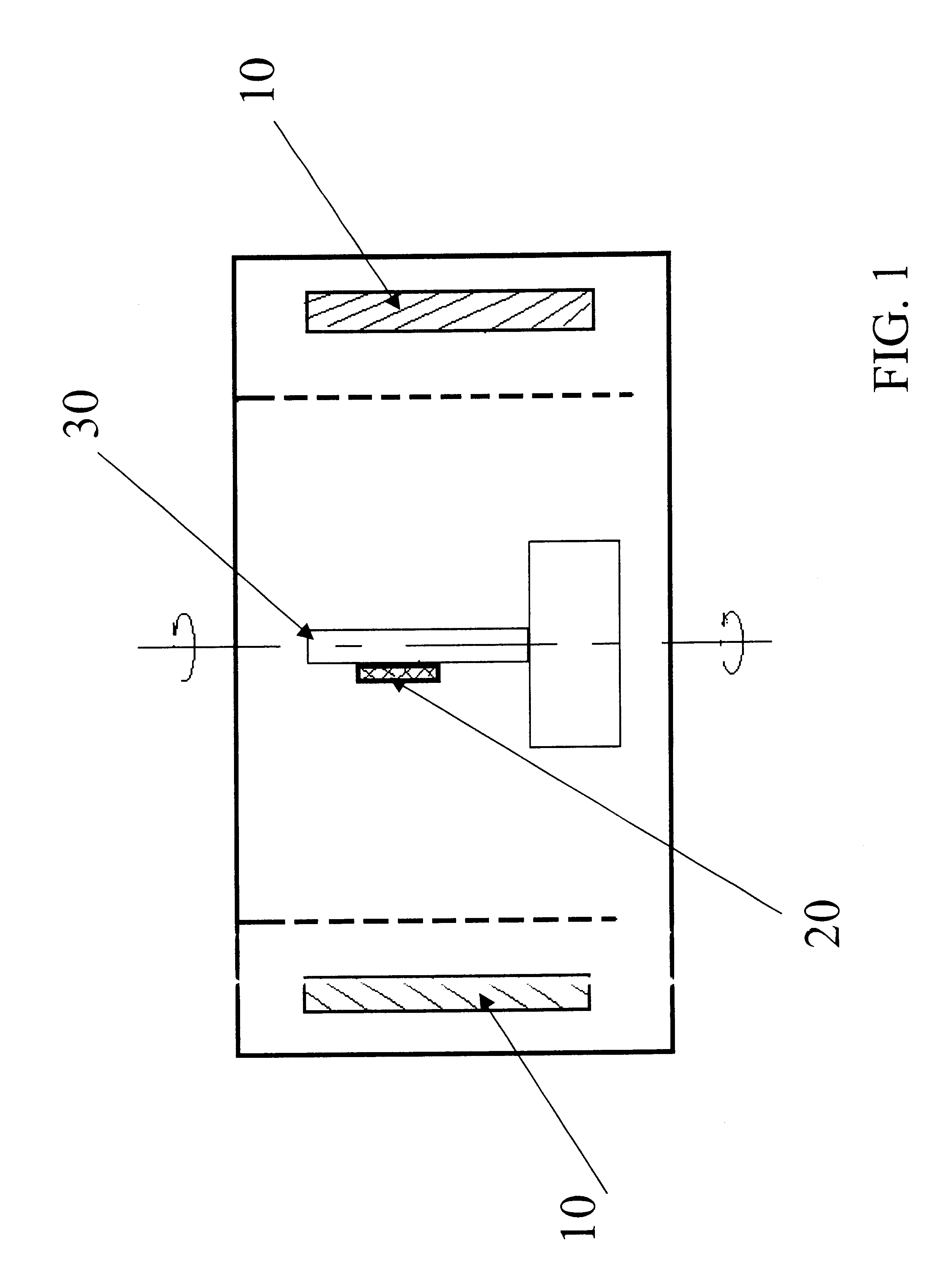Method for making a nano-stamp and for forming, with the stamp, nano-size elements on a substrate
- Summary
- Abstract
- Description
- Claims
- Application Information
AI Technical Summary
Problems solved by technology
Method used
Image
Examples
Embodiment Construction
)
The present invention relates to a method and apparatus for creating and using a nano-stamp for forming high density elevations, elements or cells on a substrate with nano-scale features including nano-scale-resolution, high-throughput, and potentially low cost. The method of the present invention does not use energetic particles or beams; neither does it require polymer resist to be placed on the surface of a substrate. Instead, the method of the present invention relies on very fast and efficient manufacturing of a nano-stamp by utilizing PVD, CVD, or other surface deposition technique, to produce a two-dimensional nano-scale multi-layered thin film, processing this thin film into a nano-stamp by cutting it perpendicular to the plane of the layers, atomically polishing the new surface, etching out alternate layers to create alternate elevations, and then indenting a substrate with the grid of alternate elevations under a variety of angles to achieve a desired nano-scale pattern.
T...
PUM
| Property | Measurement | Unit |
|---|---|---|
| Angle | aaaaa | aaaaa |
| Depth | aaaaa | aaaaa |
| Depth | aaaaa | aaaaa |
Abstract
Description
Claims
Application Information
 Login to View More
Login to View More - R&D
- Intellectual Property
- Life Sciences
- Materials
- Tech Scout
- Unparalleled Data Quality
- Higher Quality Content
- 60% Fewer Hallucinations
Browse by: Latest US Patents, China's latest patents, Technical Efficacy Thesaurus, Application Domain, Technology Topic, Popular Technical Reports.
© 2025 PatSnap. All rights reserved.Legal|Privacy policy|Modern Slavery Act Transparency Statement|Sitemap|About US| Contact US: help@patsnap.com


